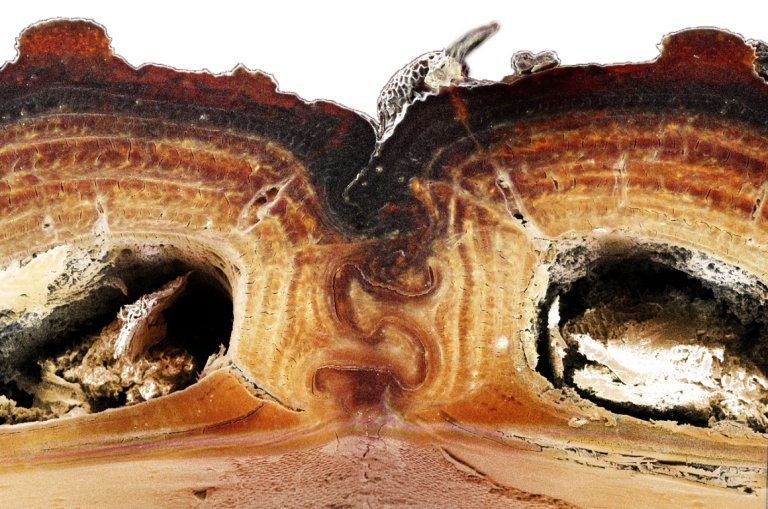Beetle that resists a car
If you often step on insects that enter your home, don’t expect to succeed with the diabolical iron beetle – it will resist even if you pass the car on top of it.
That is why engineers have been studying Nosoderma diabolicum (formerly cataloged as Phloeodes diabolicus ): To learn how to manufacture new materials that have this Herculean resistance.
These materials would be rigid, but ductile like a paper clip, making vehicles and machines, like aircraft turbines, safer and more durable.
Jesus Rivera and his colleagues at the universities of California in Irvine and Purdue believe they have discovered the secrets that make the little animal so resistant.
The super-toughness of the iron-shelled beetle surrounds its two elites, which are the wing covers of flying beetles. Only the diabolical beetle doesn’t even have wings. Thus, its armor-like elitros rest on a line, called a suture, that runs the entire length of the animal’s abdomen.
The elytra and the connective suture help to distribute the force that is eventually applied on the animal more evenly throughout the body.

Controlled delamination
Rivera investigated in detail the geometry of the medial suture, which joins the two elytra and found that it looks very much like the interlocking pieces of a puzzle. For this, the researcher built a device inside an electron microscope, which also allowed him to observe how these connections work under compression.
The results revealed that, instead of fitting in the “neck” region of these interlocks, the microstructure within the sheets of the elliter yields due to delamination, a kind of layered fracture.
First, the interconnecting blades lock to prevent them from being pulled out of the suture, like pieces of a puzzle. Second, the suture and lamina delaminate, which leads to a smoother deformation, which attenuates a catastrophic failure of the exoskeleton. Each strategy dissipates energy to circumvent a fatal impact on the neck, where the beetle’s exoskeleton is more likely to fracture.
Using compressive steel plates, the researcher found that the diabolic iron beetle can receive an applied force of about 150 newtons – a load of at least 39,000 times its body weight – before its exoskeleton starts to break.
This is more impressive than it looks: A car tire would apply a force of about 100 newtons if it passed over the beetle on a land surface, the researchers estimate. Other ground beetles that the team tested were unable to withstand even half the strength that the diabolic beetle can withstand.
Biomimetic parts
The team has already used the concept to build a biomimetic fixation clamp similar to those used to secure parts inside airplane turbines. Made with carbon fiber, but with segments that mimic the suture of the beetle, the piece proved to be as hard as a standard aerospace clamp, but significantly more resistant to breakage.
“This work shows that we can stop using hard and brittle materials for the benefit of others that can be hard and tenacious [toughness refers to how much energy a material absorbs without breaking], dissipating energy as it breaks. That’s what nature has allowed the diabolic iron beetle to make it, “said Professor Pablo Zavattieri.
Article: Toughening mechanisms of the elytra of the diabolical ironclad beetle
Authors: Jesus Rivera, Maryam Sadat Hosseini, David Restrepo, Satoshi Murata, Drago Vasile, Dilworth Y. Parkinson, Harold S. Barnard, Atsushi Arakaki, Pablo Zavattieri, David Kisailu
Journal: Nature
Vol .: 586, pages 543-548
DOI: 10.1038 / s41586-020-2813-8































Discussion about this post